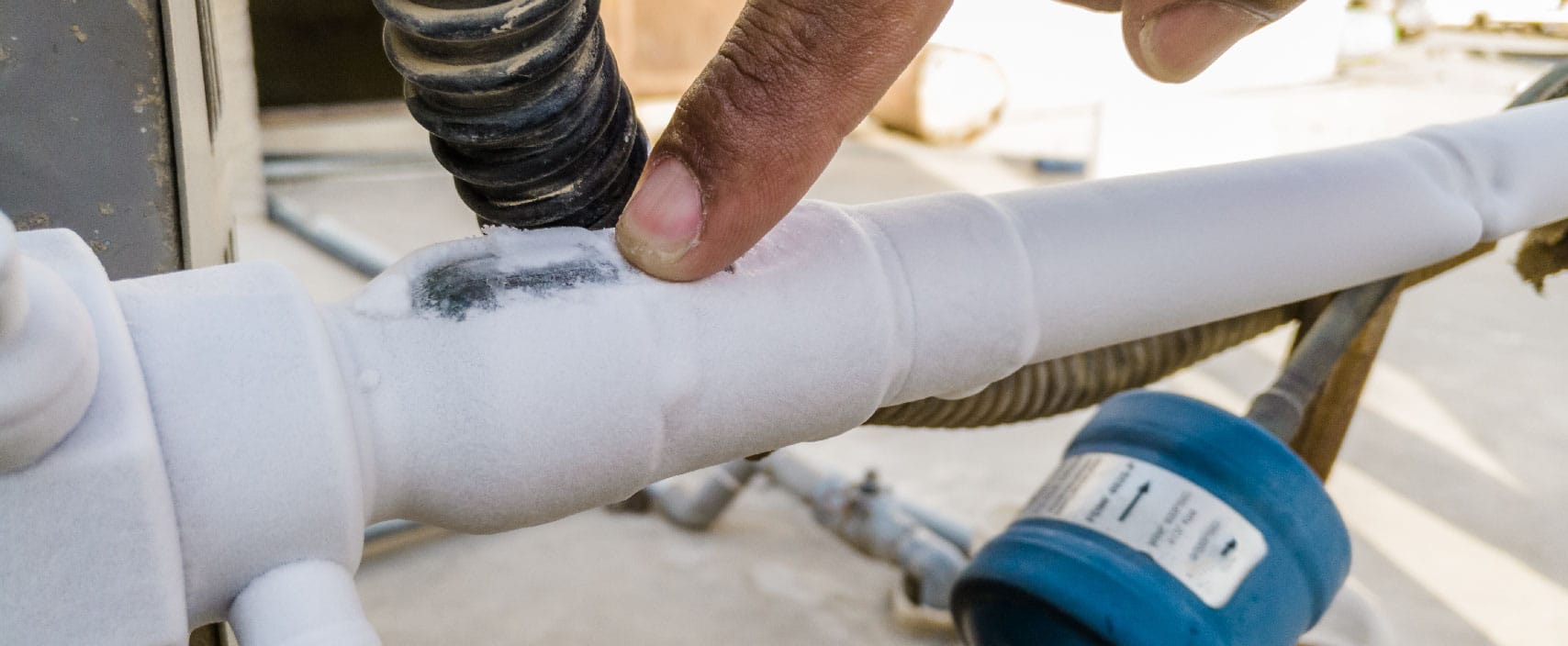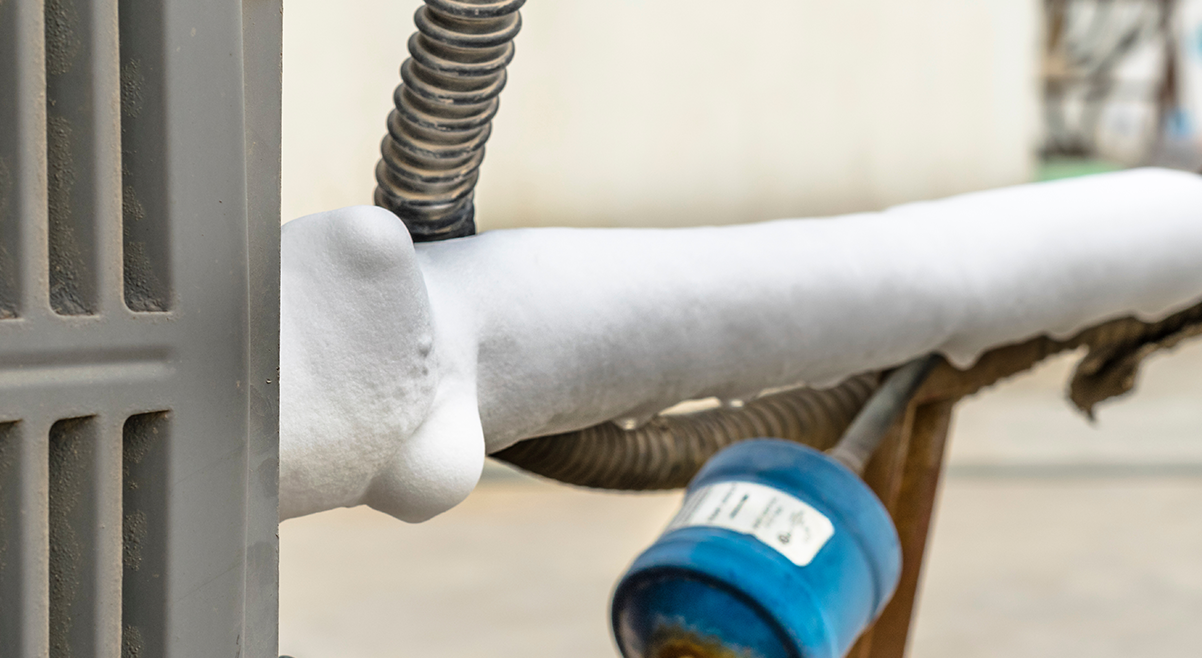My AC Pipe Is Frozen - What Do I Do? Guidance for Homeowners
My AC Pipe Is Frozen - What Do I Do? Guidance for Homeowners
Blog Article
What are your ideas regarding Air Conditioner Frozen? How To Fix your Frozen AC Line?

Introduction
Uncovering that your AC pipe is iced up can be worrying, specifically throughout hot summer season when you count on your a/c one of the most. Recognizing what to do in such a situation is critical to prevent more damage to your cooling system and guarantee your convenience indoors.
Recognizing the Causes
Several aspects can add to the freezing of an a/c pipeline. Recognizing these causes can help you deal with the problem effectively.
Absence of Airflow
One common cause of a frozen AC pipe is inadequate air flow. When the air movement over the evaporator coil is restricted, it can create the coil to drop below freezing temperature level, resulting in ice formation on the pipeline.
Low Refrigerant Levels
Inadequate cooling agent degrees in your air conditioner system can also result in a frozen pipe. Low refrigerant degrees can trigger the pressure in the system to drop, resulting in the cold of dampness on the evaporator coil.
Winter Conditions
In cooler climates, freezing temperature levels outside can contribute to the cold of air conditioning pipes. If your air conditioning unit is not appropriately shielded or if there are leakages in the ductwork, cold air can penetrate the system, triggering the pipeline to freeze.
Dirty Air Filters
Dirty or stopped up air filters can limit air flow in your air conditioner system, resulting in different issues, including an icy pipeline. It's necessary to change or cleanse your air filters consistently to make certain correct air movement and protect against ice build-up.
Indications of a Frozen Air Conditioner Pipe
Acknowledging the indications of an icy air conditioning pipeline is crucial for prompt activity.
Reduced Airflow
If you discover a considerable reduction in airflow from your vents, it can suggest a frozen pipe.
Ice Buildup on the Pipe
Visible ice build-up on the cooling agent line or the evaporator coil is a clear indicator of a frozen AC pipe.
Weird Sounds from the Unit
Uncommon audios, such as hissing or bubbling, originating from your air conditioning device can signify that there's ice present on the pipeline.
Immediate Actions to Take
When faced with an icy AC pipe, it's vital to act quickly to prevent more damage to your air conditioning system.
Switching off the AC
The first step is to shut off your air conditioner to prevent the system from running and exacerbating the concern.
Looking for Blockages
Evaluate the location around the interior device for any kind of obstructions that may be obstructing air flow, such as furniture or drapes.
Thawing the Pipe
You can make use of mild techniques like placing towels taken in warm water around the icy pipe to aid thaw it slowly.
Safety nets
Taking safety nets can aid stay clear of future occurrences of a frozen air conditioning pipeline.
Normal Maintenance Checks
Set up regular maintenance get in touch with a professional HVAC service technician to make certain that your AC system is running efficiently.
Altering Air Filters
Consistently change or cleanse your air filters to stop air movement constraints and keep optimum efficiency.
Shielding Exposed Pipes
If your air conditioner pipelines are subjected to cold temperatures, consider insulating them to stop cold throughout winter season.
Looking For Professional Help
If DIY approaches stop working to settle the issue or if you're unsure concerning just how to continue, it's finest to look for help from a qualified HVAC service technician.
When DIY Methods Fail
If your efforts to thaw the pipeline or address other concerns are unsuccessful, it's time to employ a professional.
Relevance of Hiring a Professional HVAC Technician
A qualified HVAC technician has the competence and tools necessary to diagnose and fix concerns with your a/c system safely and efficiently.
Conclusion
Managing a frozen AC pipeline can be an irritating experience, however knowing exactly how to respond can assist minimize damage and recover comfort to your home. By recognizing the causes, acknowledging the signs, and taking timely activity, you can effectively attend to the concern and prevent future occurrences.
Frozen AC Line: Why It Happens & What To Do About It
A frozen AC line can be a rather peculiar sight in a place like Phoenix, Arizona where nothing ever freezes. In this post, we’ll discuss what makes an air conditioner line frozen – and what you can do about it.
Dirty Air Filters
Did you know that you should be cleaning or replacing your air filters on a monthly basis? Failing to do this can result in airflow issues that, in turn, cause your evaporator coils and lines to freeze over. You’ll notice a buildup of ice on both components, although the buildup on your pipes will, of course, be more evident unless you open your air condition up to reveal the coils.
What To Do About It
Give your air filter a good cleaning if it’s reusable. If not, replace the filter outright. Next, switch your air conditioner’s fan setting on and leave it there for 2-3 hours. This will draw warm air in, helping to thaw your evaporator coil. You can also check out this article for some tips on cleaning the coils themselves if you’d like to speed the process up. Before you switch the unit back to its normal state, make sure the supply vents are completely unobstructed and free of dust or other debris.
If you keep having this issue even after replacing your filters regularly, contact a local HVAC repair company and have them inspect your evaporator coil, ductwork, and any other components that may be at fault. If you live in the Phoenix, Arizona area, give American Home Water and Air a call.
Low Refrigerant Levels/Leakage
What To Do About It
Contrary to what air conditioner “recharge” companies often tell their clients about refrigerant, it should never need to be simply refilled. You see, refrigerant runs in what experts refer to as a “closed loop.” Refrigerant really shouldn’t be leaving that loop. If it is, you’ve got a leak.
Paying someone to come and pump more refrigerant into your system (aka “recharge” it) isn’t the solution. Doing that will simply kick the can down the road. Besides, refrigerant leaks can be harmful to the environment and people in your home.
Rather, you need to take care of the leak with the help of a technician. Check out this article for some more information about dealing with air conditioners that are leaking refrigerant. Before you contact a technician, switch your thermostat to the off position. Then, switch the fan setting on and let it run for 2-3 hours so the unit can thaw.
Improper Temperature Setting
Improper temperature settings can also cause a drop in your air conditioner’s pressure. What many people don’t realize is that air conditioners are actually designed to run when temperatures have fallen above roughly 60 degrees Fahrenheit. If you run the unit when it’s cold outside, you’ll run into many issues, including frozen components.

As an avid person who reads about Air Conditioner Frozen? How To Fix your Frozen AC Line, I imagined sharing that post was appropriate. Make sure you take the opportunity to share this post if you appreciated it. I recognize the value of reading our article about Have a Frozen AC Line? Here’s How to Fix It.
Get Started Report this page